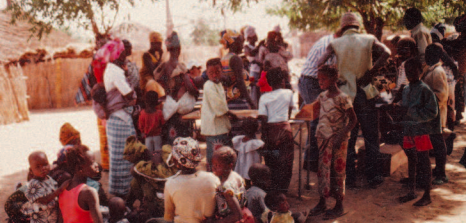Concurrent wasting and stunting among under-five children in Senegal
Research snapshot1
The study describes the patterns of concurrent wasting and stunting (WaSt) among children age 6-59 months living in the 1980s in Niakhar, a rural area of Senegal under demographic surveillance. Wasting and stunting were defined by z scores lower than −2 in weight for height (WHZ) and height for age (HAZ) respectively. Both conditions were found to be highly prevalent; wasting more so before age 30 months, stunting more so after age 30 months. As a result, concurrent WaSt peaked around age 18 months and its prevalence (6.2%) was primarily the product of the two conditions, with an interaction term of 1.57 (p < 10 −6). The interaction was due to the correlation between both conditions (more stunting if wasted, more wasting if stunted). Before age 30 months, boys were more likely to be concurrently wasted and stunted than girls (relative risk = 1.61), but the sex difference disappeared after 30 months of age. The excess susceptibility of younger boys could not be explained by muscle mass or fat mass measured by arm or muscle circumference, triceps, or subscapular skinfold. Concurrent WaSt was a strong risk factor for child mortality (the combined effect of WaSt explained some 51% of the total mortality), the effect of which was the product of the independent effect of each component, with no significant interaction. More research is needed on common factors underlying wasting and stunting, the potential increased susceptibility of one to the other (stunted children being more likely to become wasted and wasted children being more likely to become stunted) and potential underlying factors which cause variations by age and sex. Whatever the aetiology of WaSt, the authors argue that the case deserves more attention due to its dramatic impact on child survival.

Endnote
1Garenne M, Myatt M, Khara T, Dolan C, Briend A. Concurrent wasting and stunting among under-five children in Niakhar, Senegal. Matern Child Nutr. 2018; e12736. https://doi.org/10.1111/mcn.12736

